For years, the word “cardio” meant one thing to people: running. Usually on a track or a treadmill, for an hour or more at a time. And it didn’t matter if running bored you out of your mind or made your knees and back hurt—if you wanted to be in shape or lose fat, you had to do cardio!
Nowadays, the fitness industry defines cardio more broadly, and while you’re still welcome to do long jogs if that’s your thing, you have another option as well: high-intensity interval training—often called HIIT. Interval workouts can use any type of exercise, from cardio machines to bodyweight to free weights, so you can customize your workout to your own needs.

Burn Belly Fat With These 3 Great HIIT Workouts For Women
Here’s how HIIT works: you alternate fast, intense periods of exercise with bouts of light activity or complete rest. While it takes a fraction of the time a traditional aerobic workout does, HIIT can be just as effective for reshaping your body—and many people (including yours truly) think it’s a lot more fun and challenging.
HIIT may be the perfect kind of cardio for busy moms or women who can’t (or won’t) run anymore, as well as those who don’t have access to a gym. In fact, low-impact HIIT workouts are the number-one request I get from my clients and female Instagram followers. HIIT can be tailored to your experience level and the equipment you have available, including if you work out at home.
What Are HIIT Workouts?
There are many ways to do high-intensity interval training, but the concept is always the same: work hard for a few seconds to get your heart rate up, and then take it easy to recover. Repeat for rounds. Unlike traditional cardio (jogging, swimming, cycling, etc.), where you work at a moderate and steady pace for long periods (usually 30 minutes or more), HIIT workouts are anaerobic—they don’t use oxygen as their primary energy source. Instead, they rely on creatine phosphate to provide the power for explosive, rapid-fire activity, which means HIIT has more in common with weight training than it does jogging. So if you love to lift as much as I do, chances are you’ll enjoy HIIT more than steady-state cardio!
Because HIIT workouts are so intense, you simply can’t perform them for long (just as you can’t lift weights steadily for minutes on end). Work intervals are usually much less than 60 seconds (rest intervals may be longer or shorter, depending on how hard the work bouts are), and the whole workout typically lasts 20 minutes or less.
How Females Can Benefit From HIIT Workouts
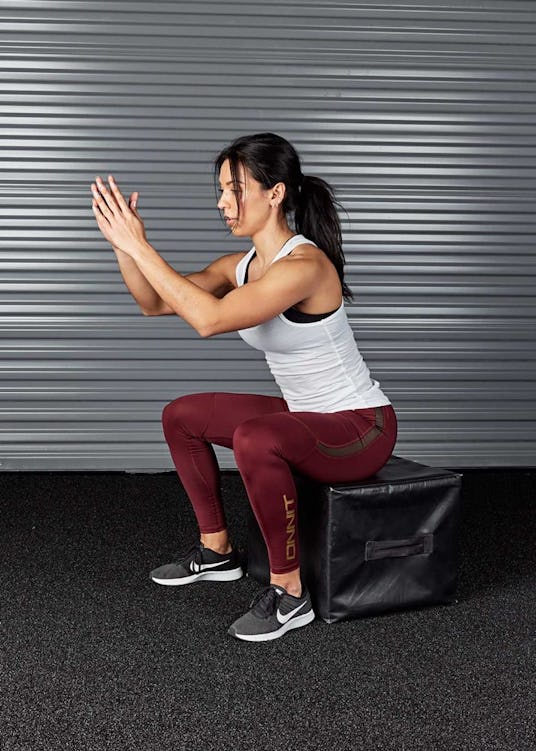
HIIT workouts may not last long, but they can provide just as good a workout as sessions that take much more time. According to the American College of Sports Medicine (ACSM), HIIT workouts can burn more calories per minute of exercise than aerobic training does, making it the better cardio option when you’re short on time.
The other big benefit of HIIT is the effect it has on your metabolism. Like weight training, HIIT increases post-exercise oxygen consumption (EPOC). Says the ACSM: “This is generally a two-hour period after an exercise bout where the body is restoring itself to pre-exercise levels, and thus using more energy. Because of the vigorous contractile nature of HIIT workouts, the EPOC generally tends to be modestly greater, adding about six to 15% more calories to the overall workout energy expenditure.” In other words, HIIT has you burning more calories—including more fat—when you’re recovering after the workout. That means you’ll actually be getting leaner when you’re hanging out around the house, watching TV, and sleeping! You don’t get this same effect with aerobic training.
Since HIIT has the muscles working hard, it also has the potential to boost muscle growth. Look at power athletes such as sprinters and sprint cyclists—their workouts are variations of HIIT, and they typically have ripped bodies to show for it.
How Many Times Per Week Should You Do HIIT Workouts?
As with lifting weights, HIIT is stressful to the body and requires recovery time. You can’t do it every day. I generally recommend that my clients do two or three HIIT sessions per week, done either on the same day that you lift (preferably right afterward or several hours apart) or on days in between.
For as many advantages as HIIT has over steady-state cardio, it’s still important to fit some long-duration aerobic training into your week if you can. I’ll jog or jump rope at a light pace at least one day per week, and for a minimum of 15 minutes. Steady-state cardio builds an aerobic base that your body can use to fuel all its other activities, and it’s good for your heart, as well as burning extra calories.
Beginner HIIT Workout For Women
If you’re new to HIIT, or working out in general, this routine is a perfect place to start. You’ll use only your bodyweight, and every move is low impact—so if you’re overweight, or have back, knee, or shoulder problems, these exercises shouldn’t aggravate them.
Directions: Perform reps of each exercise in turn for 30 seconds, resting 15 seconds between sets. After you complete one round, rest about a minute (more if you need to), and then repeat for 3 to 5 rounds.
Workout duration: 20–30 min.
1. Squat Twist
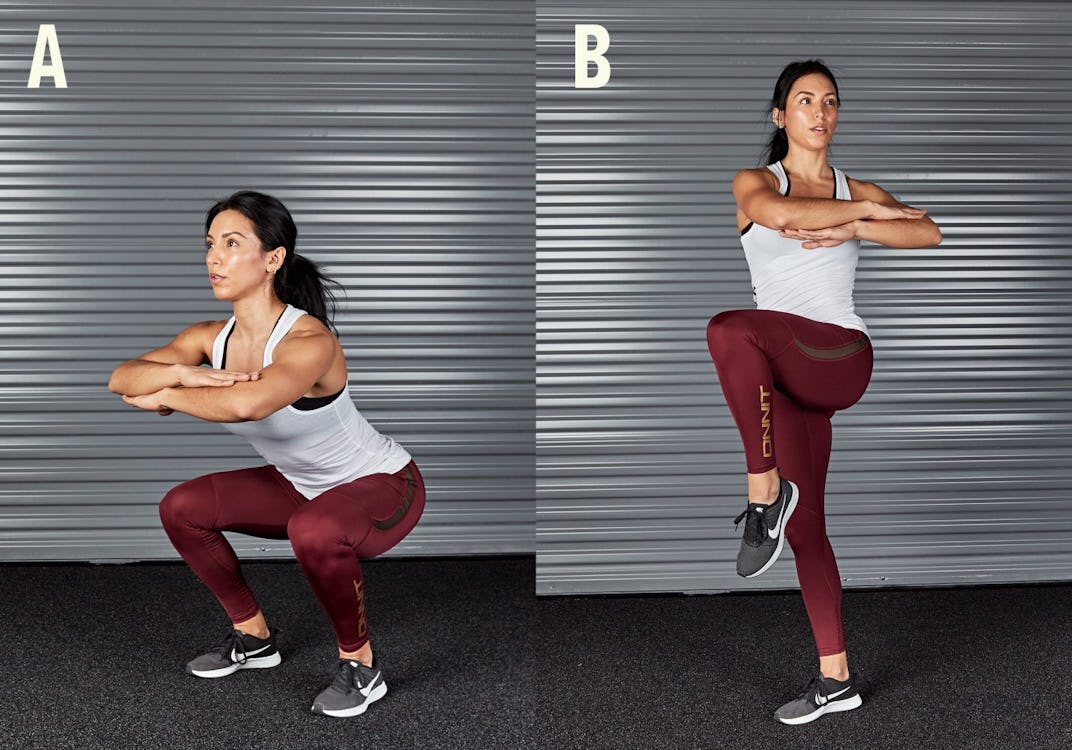
Step 1. Stand with feet between hip and shoulder-width apart and cross your arms in front of your chest to help you balance. Twist your feet outward and into to the floor (as if you were standing on turf and trying to twist it up beneath your feet), but without moving their position—you just want to create tension and feel your hips and glutes fire up. You should feel the arches in your feet rise.
Step 2. Begin to lower your body, pushing your knees apart and sitting back as if into a chair. Go as low as you can while keeping your head, spine, and pelvis in a long line. If you feel your tailbone is about to tuck under, stop there.
Step 3. Come up out of the squat and twist your torso to the left, raising your left knee into the air 90 degrees. Squeeze your abs. Reverse the motion and repeat the squat, twisting to the opposite side.
2. Reach and Crunch
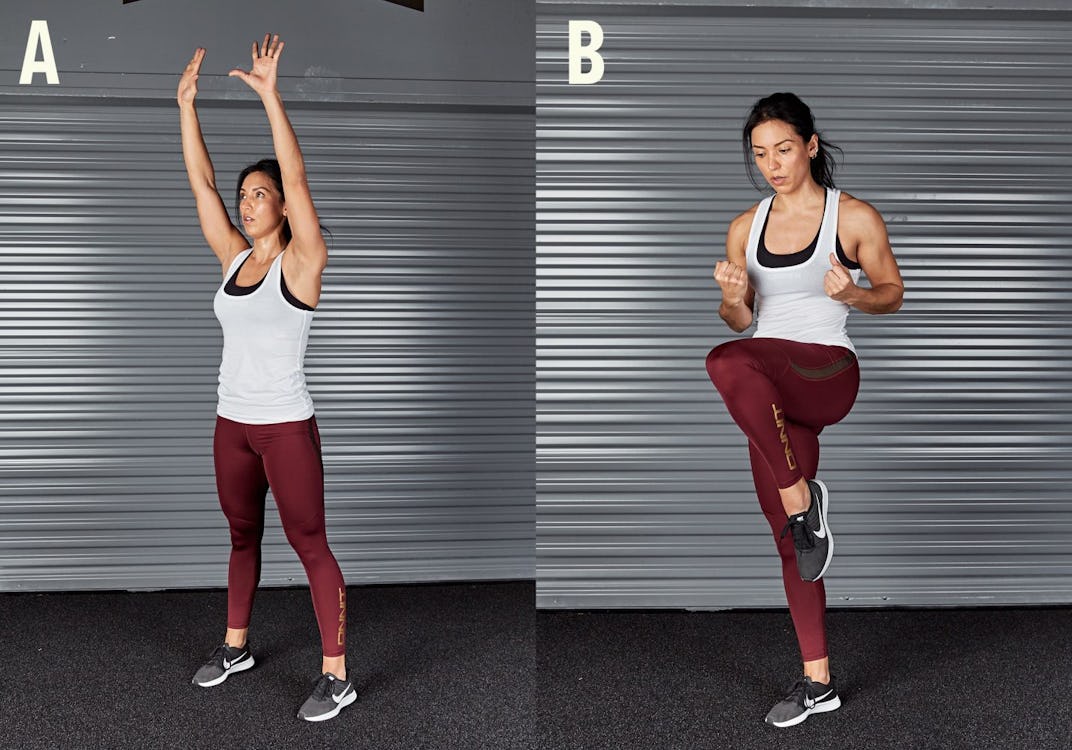
Step 1. From standing, pull your ribs down and tuck your tailbone slightly so that your core is braced. Raise your arms straight overhead—keep your core tight so that your ribs don’t flare out and your back doesn’t hyperextend.
Step 2. Twist your torso to the left as you bring your left knee up and pull your arms down, as if delivering a knee strike. Crunch your abs, trying to bring your ribs and hips together.
3. Shuffle Punch

Step 1. Stand with feet together and your arms chambered at your sides, ready to throw straight punches.
Step 2. Shuffle your feet to your left and land in a deep squat with feet outside shoulder width. As you drop into the squat, punch your right arm straight out, and then shuffle to the right and punch with your left arm.
4. Squat and Reach
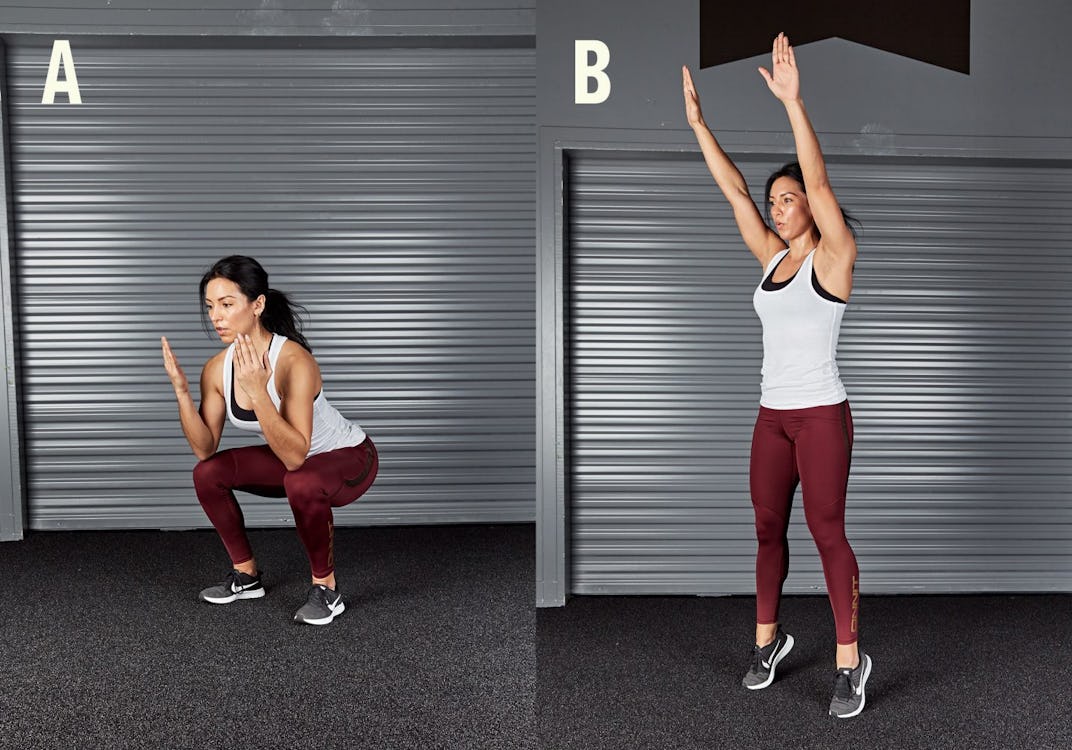
Step 1. Perform a squat as you did in the squat twist above, but start with your arms bent in front of you, as if you had just curled a barbell. Squat until your elbows touch your knees.
Step 2. Come out of the squat quickly so the momentum makes you come up on the balls of your feet. Reach your arms overhead while keeping your ribs pulled down and core engaged.
5. Side-To-Side Knee Drivers

Step 1. Stand with feet outside shoulder width and reach your arms overhead and slightly to the left.
Step 2. Draw your arms down while driving your right knee up and to the left, as if delivering a knee strike. Repeat on the opposite side.
6. Mountain Climber
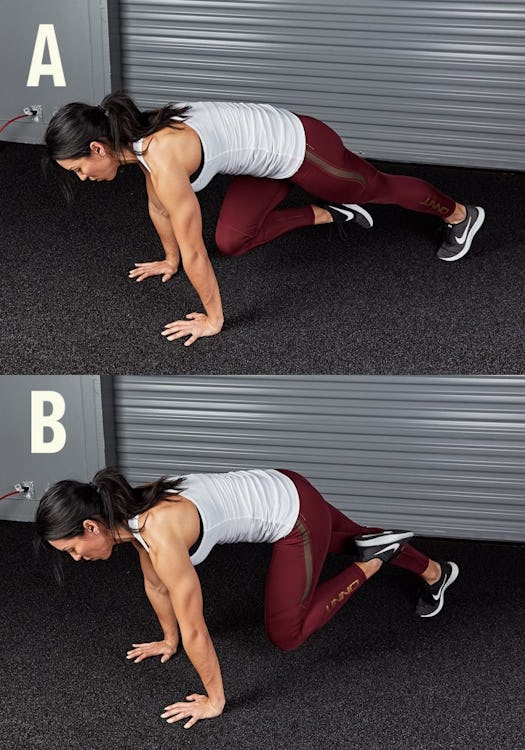
Step 1. Get into the top of a pushup and then drive your right knee to your chest while keeping your hips level with the floor.
Step 2. Replace your right foot and raise your left knee to your chest. Continue alternating sides at a brisk pace.
7. Table Top Reach and Lift
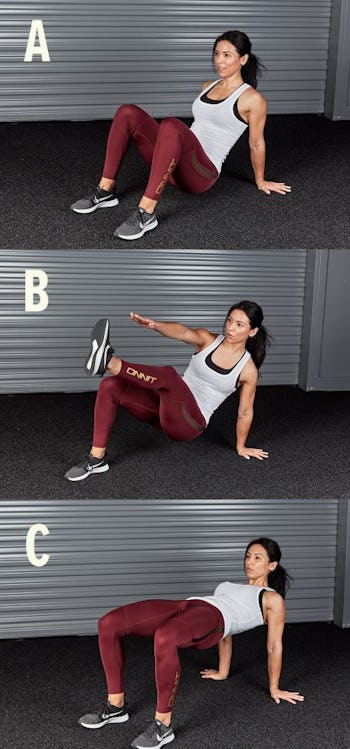
Step 1. Sit on the floor with feet planted in front of you and hands underneath your shoulders. Brace your core.
Step 2. Push through your heels to raise your hips off the floor. Raise your left leg straight out in front of you and reach for it with your right arm. Lower your hips and repeat on the other side.
Step 3. Raise your hips into a full table-top position, tucking your pelvis under slightly and bracing your core so that your lower back doesn’t hyperextend in the top position.
Advanced HIIT Workout For Women
When you’re ready to take it up a notch, try this HIIT routine, which employs some light plyometric exercises—jumping moves that train explosive power. Not only do they get your heart rate up and challenge your muscles, but they’re fun to do. You’ll feel like an athlete again (or, if you didn’t play sports in school, for the first time—it’s never too late!)
Directions: You’ll need a small box, step, or other platform. Perform reps of each exercise in turn for 20 seconds, resting 10 seconds between sets. After you complete one round, rest about a minute (more if you need to) and then repeat for 3 to 5 rounds.
Workout duration: 12–20 min.
1. Toe Tap

Step 1. Set a box or step that’s about a foot high in front of you. Quickly raise one leg and tap the top of the box with your foot.
Step 2. Return your foot to the floor and repeat on the opposite leg. Get into a rhythm that’s like you’re running, tapping the box quickly with each foot and staying light on your feet.
2. Explosive Hop Up
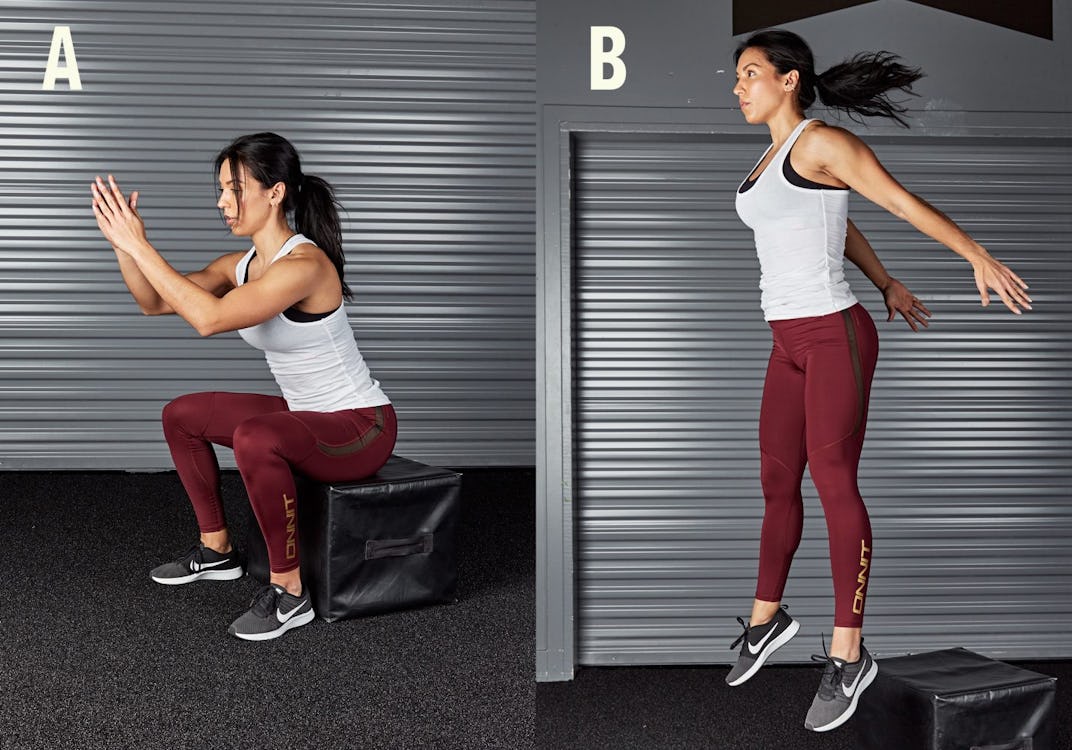
Step 1. Sit on the box with feet on the floor at hip width. Raise your arms up in front of you.
Step 2. Swing your arms back as you jump off the box as high as you can. Land with soft knees and lower yourself back onto the box. Reset before you begin the next rep.
3. Hop Over
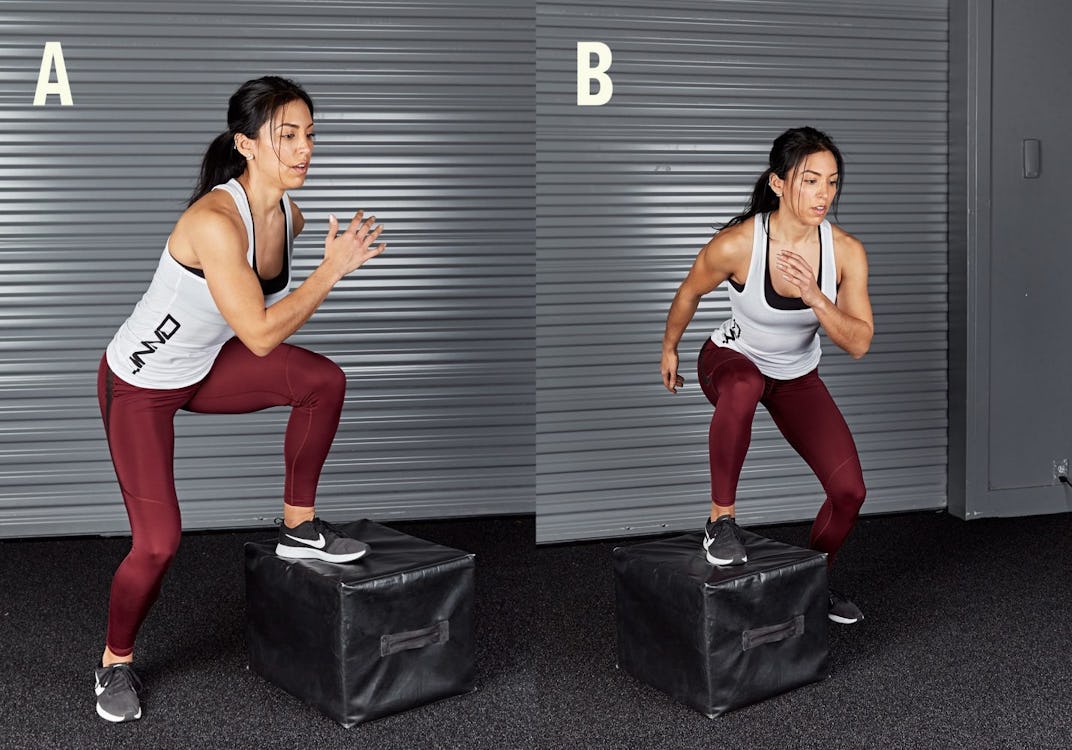
Step 1. Stand to the right side of the box and place your left foot on top of it.
Step 2. Push off the box to hop over it laterally, landing with your right foot on the box and your left foot on the floor. Immediately repeat to the right side and continue performing reps in a rhythm.
4. Quad Hop

Step 1. Stand behind the box and place your left foot on it.
Step 2. Press through your foot to hop up into the air. Swing your left arm forward as you come up to increase the height of your hop. Land softly and repeat immediately. After you’ve spent 20 seconds on your left side, rest, then switch sides, and repeat.
5. Hands-On Climber

Step 1. Place your hands on the box and get into a pushup position.
Step 2. Perform mountain climbers as described in the beginner’s workout above.
6. Feet-On Climber
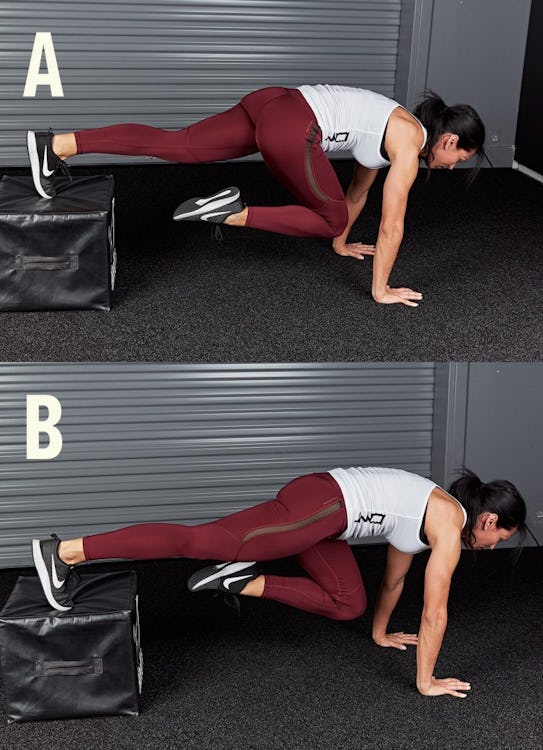
Step 1. Rest your feet on the box and get into pushup position.
Step 2. Perform mountain climbers as you have above, alternating each knee to your chest, but move more methodically, being careful to replace each foot on the box before you lift the other one.
7. Single-Leg Switch



Step 1. Sit on the box and extend your right leg straight out in front of you. Reach your arms forward to help you balance.
Step 2. Stand up from the box using only your left leg and then quickly hop onto the right foot and sit back down. Now stand up on the right leg. Get into a rhythm.
HIIT Workout You Can Do At Home
HIIT doesn’t need to be done in a gym. All you need is some light dumbbells (even a pair of three-pounders will do) and a few feet of open floor space.
Directions: Perform reps of each exercise in turn for 30 seconds, resting 15 seconds between sets. After you complete one round, rest about a minute (more if you need to), and then repeat for 3 to 5 rounds. To make your glutes work harder, wrap an elastic exercise band just above your knees so that it resists your legs (optional).
Workout duration: 20–30 min.
1. In/Out Squat Jump Press

Step 1. Stand with feet close together, holding a pair of light dumbbells at your sides with elbows bent 90 degrees.
Step 2. Jump and spread your legs, landing in a deep squat at the same time you press both weights out in front of you at arm’s length. Jump back to the starting position.
2. Alternating Kickback Press
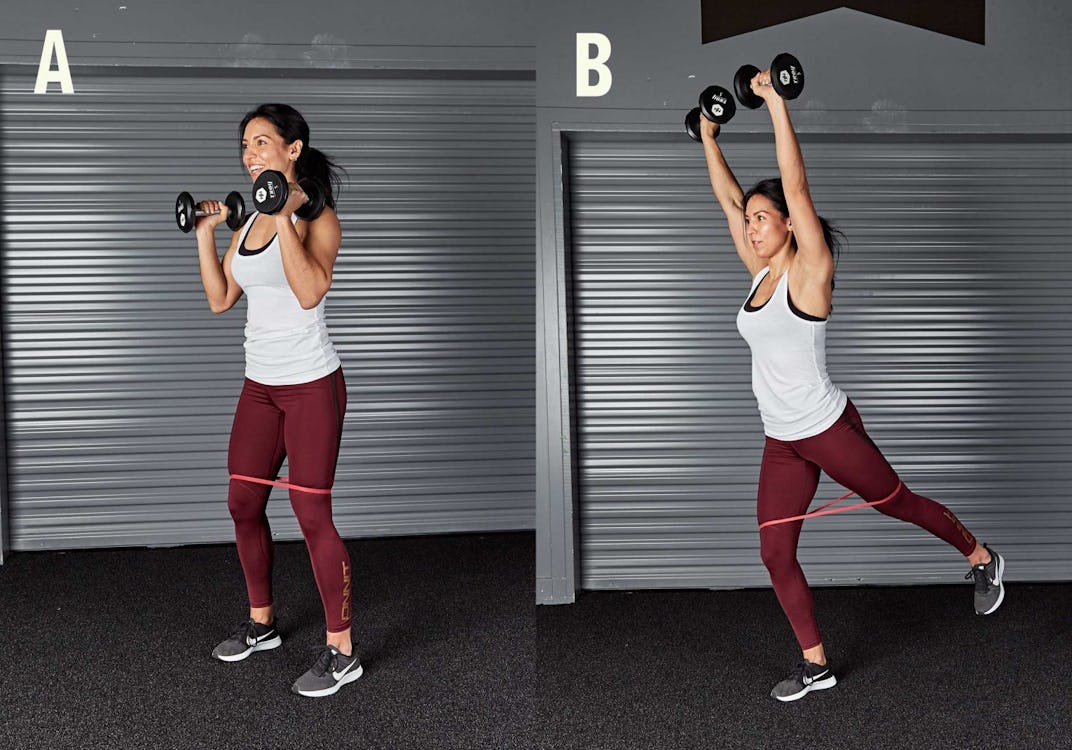
Step 1. Stand holding dumbbells at shoulder level with feet closer together.
Step 2. Extend your left leg behind you with knee straight as you press the dumbbells overhead. Return to the starting position and repeat on the opposite leg.
3. Jumping Jack Press
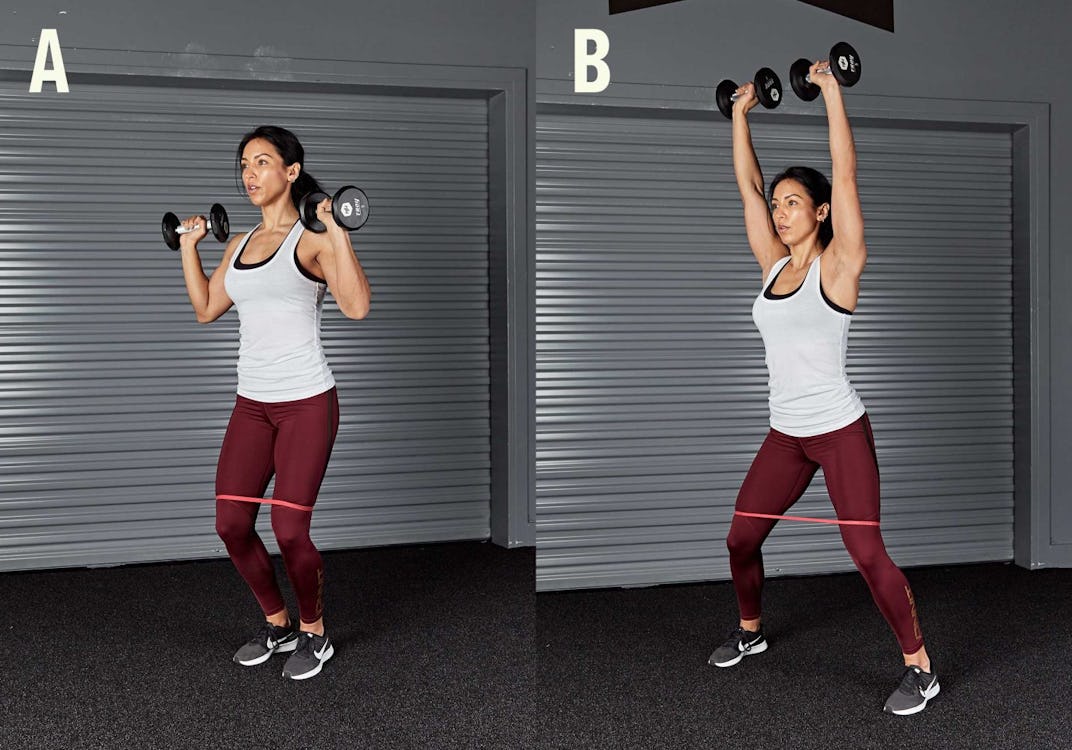
Step 1. Hold dumbbells at shoulder level and stand with feet close together.
Step 2. Dip your knees quickly to gather momentum, and then jump your legs to outside shoulder width as you press the weights overhead. Land with soft knees.
4. Squat Press
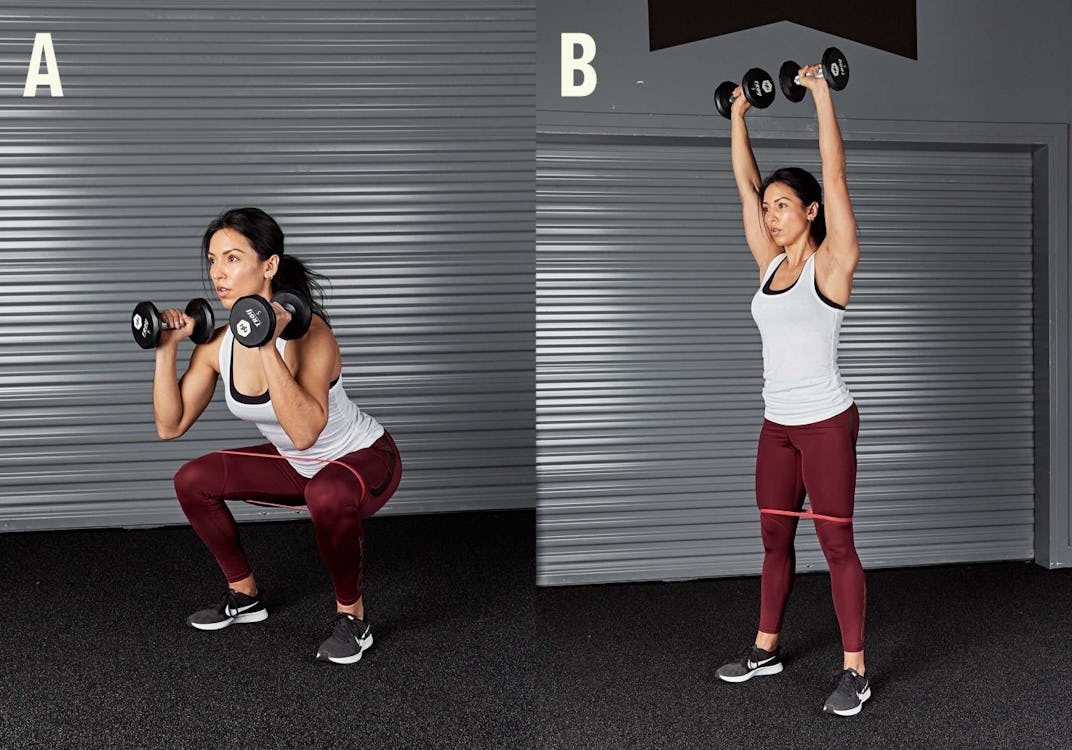
Step 1. Hold dumbbells at shoulder level and squat.
Step 2. As you come up, press the weights overhead.
5. Lunge Press (right leg)

Step 1. Hold dumbbells at shoulder level and step back into a staggered stance so your right leg is front. Lower your body so that your left knee nearly touches the floor and your right knee is bent 90 degrees.
Step 2. Stand straight up from the lunge position and press the weights overhead.
6. Side-To-Side Squat Front Raise

Step 1. Stand with feet together and dumbbells at your sides.
Step 2. Step out to your left side and squat as you raise the dumbbells up to shoulder level in front of you. Step back to the starting position and then repeat to the right side.
7. Lunge Press (left leg)

Perform the lunge press again but with the left leg in front.
8. No-Jump Jack

Step 1. Hold dumbbells at your sides with palms facing forward, and stand with feet together.
Step 2. Step to your right side as you raise the weights overhead in an arcing motion, as if doing a jumping jack. Repeat to the opposite side.
How To Create Your Own HIIT Workout
Once you’ve gotten the hang of HIIT, feel free to make up your own HIIT workouts to keep your training fun and challenging. Here are some guidelines to remember.
1. Choose exercises you can do in one place (more or less). Because the work and rest intervals tend to be brief, you don’t want to create a workout that has you running around your gym from station to station. Keep your equipment and setups simple.
2. Alternate really hard exercises with easier ones. If you squat with weights in one interval, you probably shouldn’t do burpees in the next one. The point of HIIT is too work hard, but not so hard that you burn yourself out early and can’t finish the workout with intensity. Another tip: play with your work-to-rest ratios. You may want to use shorter work intervals and longer rests when you’re just getting started, and add work and subtract rest as you get fitter.
3. You can make HIIT workouts with mobility exercises. If you want to spend more time opening your tight hips or stretching your hamstrings, use mobility drills like the hip-opening mountain climber and twist and sit-knee in your HIIT sessions. You can alternate them with tougher bodyweight or weight-training moves, or use mobility exercises exclusively. You may be surprised how fast mobility moves done with focus and precision can raise your heart rate.

)





